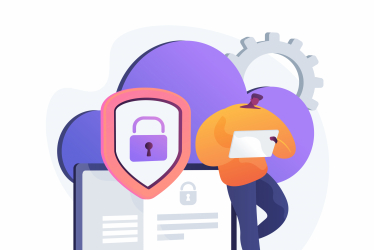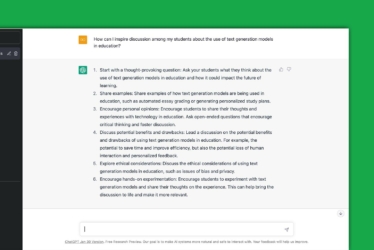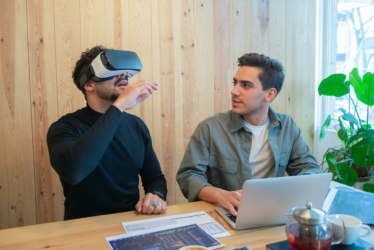Insights
Top Tips for Remote Conferencing
During the Coronavirus (COVID-19) crisis, the number one question on academics’ minds is how to best continue their classes online. Yet another key question facing university staff is: how can I host a workshop, seminar or conference while in lock down? It might be easy to record a keynote digitally, but how can discussion panels or networking take place online? In this article, we explore how to transition to remote conferences, and the potential benefits of switching.
The Sustainable Benefits of Remote Conferencing
Beyond the social distancing and lockdown measures operating around the world in response Coronavirus (COVID-19) outbreak, there are good reasons to use remote conferences.
- To free up the time in agendas that is usually taken for travel.
- To reduce travel-related carbon emissions.
- To make conferencing more accessible and equitable by reducing costs and increasing diversity in participation.
The Centre for Innovation investigated the prospects for sustainability in academic remote conferencing from early 2020. We discussed the benefits and downsides of remote conference during our Edtech for Sustainability event. Despite a few technological hiccups, it performed well as an unintentional test run for the situation we currently face.
We concluded that hybrid (or blended) events are very difficult to manage, but a network of meetings with one central hub can be effective. What is better, is to have a fully online event, as that invites all participants on an equal footing. Yes, meeting face-to-face at the start is always better, but it’s possible to connect as peers online as well.
Re-imagining the conference for online
Do we really need all the traditional agenda items that take place in most conferences, or is it time to re-imagine conferences to be more active and engaging?
While you read our guidance to digitise your conference, keep in mind these two types of online conferences:
Synchronous – A live conference, with participants attending at the same time, wherever they may be joining from.
- Benefits: Discussion and response are immediate, and there might be a greater degree of active participation.
- Downsides: People in different time zones may not equally be able to join.
Asynchronous – Conferences that do not need participants to attend all at the same time, often using set time periods and pre-recorded material.
- Benefits: Participants may join from any time zone, all over the world, and partake in discussion without needing to be online at once. Discussions may be more thoughtful and deliberate too.
- Downsides: Conferences may experience a lower intensity and participants could lose out on a sense of ‘togetherness’. It could feel like an online course or even an entertainment streaming service.
Online Alternatives to Traditional Conference Formats
1. Keynote Speech (1 person with a large audience)
Synchronous Replacement
- A VR presentation
- A Webinar including QA session at the end
- Use online polls
Asynchronous Replacement
- A pre-recorded video or podcast, coupled with a discussion forum hosted by keynote speaker
2. Discussion panel (3-5 people with a large audience)
Synchronous Replacement
- Webinar with a host with 3-5 guests, including Q&A
- Use online polls
Asynchronous Replacement
- Pre-recorded video or podcast with an interviewer and 3-5 guests, coupled with a discussion forum
3. Discussion group (3-15 people discussing together)
Synchronous Replacement
- Virtual classroom
- Video Conferencing
- Chatroom
Asynchronous Replacement
- Dedicated discussion forum
4. Workshop (1 host with 10 people)
Synchronous Replacement
- Virtual Classroom
- Video Conferencing
- Chatroom
- Use a brainstorm tool like Mural or Padlet
Asynchronous Replacement
- Carefully time this in stages.
- Use discussion forums
- Use a mind map tool like Mural or Padlet
5. Poster Presentation
Synchronous Replacement
- N/A
Asynchronous Replacement
- Screencast of a Powerpoint, coupled with comment section
- Infographics posted up on a portal website, coupled, with comment section
6. Networking / Drinks
Synchronous Replacement
- Chat room
- Live music streaming
- Teleconferencing robots
- Network meet-up apps
Asynchronous Replacement
- Meet-up area or socialising room in your discussion forum
- Cultural interlude with video or podcast
- Network meet-up apps
Building a community for your online event
Important features of any event are community building and networking, but how can you make up for the lost face-to-face interactions during an online conference?
We advise you to consider building an online community space around your conference. It does not have to be a permanently maintained community (though you could do that), but rather a dedicated space starting around one month before your conference. The community space interactions should peak during your conference and then also continue during a dedicated follow-up week, with feedback, goodbyes and exchanges of contact details.
The space can be set up simply, for instance as a LinkedIn group or a set of forums in a closed environment. There are some basics to building an online community that we will deal with in another article. The main thing to remember is that you need to spend dedicated time to build your community, encourage activity and maintain it leading up to, during and after the conference. That doesn’t mean moderating your online community around the clock, but appoint ambassadors or community leaders who can take the lead. Also consider hosts or moderators who can contribute to smooth operations.
Software & Practical Considerations
For asynchronous events, you can create a portal website where you can post videos, podcasts and other media, as well as hosting your online community using forums or integrated social media. There are open source free options available (WordPress, YouTube), but if you work from an institution you might want to chat with your IT department about what is already available using your institution’s tools. Make sure to involve your data privacy officer in that discussion, especially if you want to use a login or a mailing list.
Consider a repository of files (Google Drive, One Drive, Github) as an additional way to work together with participants. Mural or Padlet might aid you with mindmapping. Online polls are sometimes part of the webinar software or you can introduce Kahoot or Mentimeter. This may have limitations imposed by your data privacy officer.
If you are considering hosting a synchronous event use webinar software. To make sure you using the right tools, consult your university IT department and Data Protection Officer. At Leiden University, for instance, we are not allowed to use Zoom, but MS Teams and Kaltura Live Room are available (choose your tool depending on group size).
If you are pre-recorded material, please check out the advice in the video toolkit of Leiden University.
Need more help?
The Centre for Innovation has a facilitation and learning guild that can help re-imagine your traditional conference for an online audience, with advice for alternate conference formats and building online communities. The Lorentz Center at Leiden University can also offer advice on alternate conference work forms.
Get in touch with the author

Tanja de Bie
Online Learning Expert
t.de.bie@sea.leidenuniv.nl
Literature
- http://flyinglessresourceguide.info/
- https://culanth.org/fieldsights/reimagining-the-annual-meeting-for-an-era-of-radical-climate-change
- https://www.nature.com/articles/d41586-019-03899-1
- https://bryanalexander.org/climatechange/higher-ed-and-climate-change-the-end-of-academic-conferences-as-we-know-them/
- https://www.wired.com/story/opinion-science-conferences-are-stuck-in-the-dark-ages/




